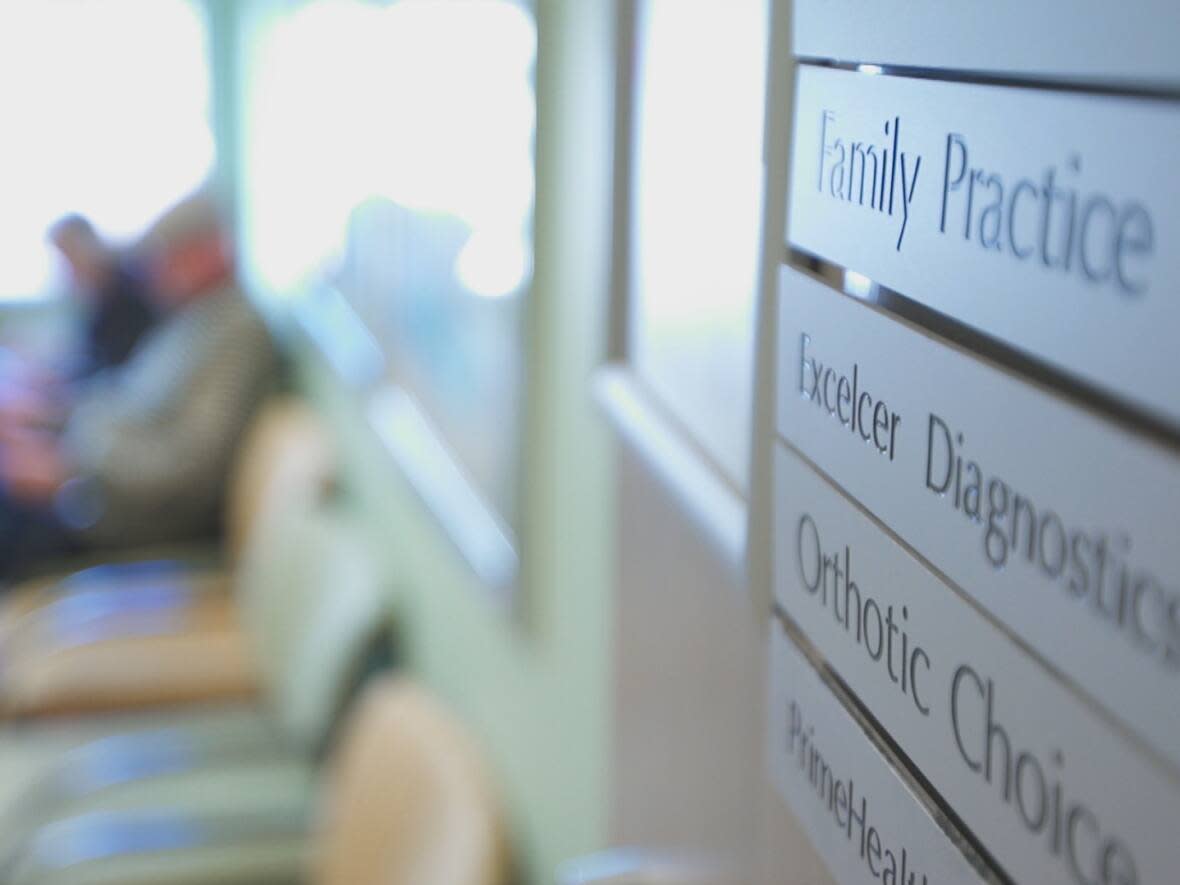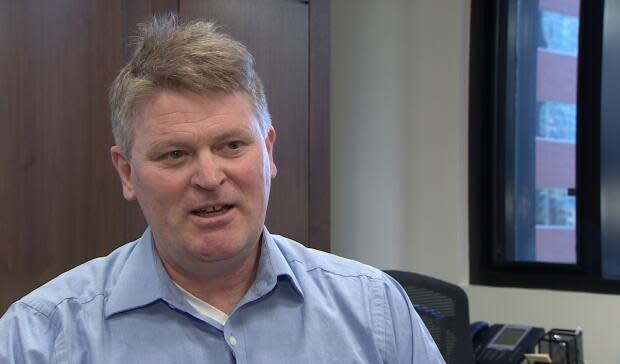Canada could be training 100 more family doctors this year, but medical residency spots go unfilled

Some 100 family medicine residency training spots will be unfilled across Canada when new physicians start the next phase of their education in a few months — the continuation of an alarming trend that is exacerbating the family doctor shortage in the country and prompting a call to fix what some critics describe as a broken system.
"The concern is there ... because it's an opportunity lost, if you will, around bringing a prospective family physician into the profession," said John Gallinger, head of the Canadian Resident Matching Service (CaRMS).
The non-profit organization takes students' top choices of specialties and locations and uses an algorithm to correlate them with the top choices of each residency program at the 17 medical schools across Canada.
"I look at the system and I see that the system is able to absorb more family medicine positions, more people matched to it," he said.
Matching to a residency spot is important because medical doctors can't become licensed or work without finishing this training.
Every year, there are two rounds of matches. In most provinces, other than Quebec, the first round separates Canadian-trained physicians (CMGs) from those who went to medical school internationally (IMGs).
In most cases, other than Alberta, the second round allows CMGs and IMGs to compete head-on for the remaining spots.
Matching data
Data released on Thursday shows 3,422 graduating students and physicians were matched to residency training programs in Canada this year. There were 3,532 positions in the match, which means 96.9 per cent were filled.
At the end of the process, 110 spots were unmatched, including 100 in family medicine. The majority of those are in Quebec and Alberta.
This year, 2,850 applicants were CMGs. After both rounds, there were 54 unmatched CMGs (1.9 per cent), compared with 35 (1.2 per cent) in 2022.
Also this year, 555 IMGs and 17 United States medical graduates (USMGs) were matched to residency positions. The number of IMGs matched in 2023 has increased from the 439 matched in 2022.
Embed:
'Unprecedented' number of unfilled spaces
Gallinger said he knows there is confusion, frustration and concern about the number of unfilled spots and the number of unmatched applicants, but "are those applicants interested in those programs? That's where it comes down to," he said.
"The basic element of the match process is choice. And applicants can choose to apply and rank whichever programs are of interest. And programs, of course, in turn are able to identify and rank the applicants that they are interested in training," he said.
WATCH | Canada to get 3 new medical schools:
"Sometimes those two things don't align, where applicants — for whatever reason — decide they want to focus on a particular discipline or a particular location and that does not line up with where positions are available."
There is a post-match process that takes place between programs and applicants connecting outside of CaRMS. Gallinger said it's not widely used, but this year, "I think Alberta has a strong desire to address the issue."
The Alberta Medical Association is calling on the provincial government to urgently stabilize family medicine practices, especially in rural areas, to make the specialty more attractive.
In a letter to members, association president Dr. Fred Rinaldi decried the "unprecedented" number of unfilled family medicine spaces in Alberta — 22 after the second round. She notes that British Columbia, Saskatchewan and Manitoba have no unfilled family medicine spaces.
"People have chosen to go elsewhere. It's a reflection of the political economic climate to provide support for physicians into sustainable practices in Alberta," she said in an interview with CBC News.
"The opportunity is to do something now to attract physicians, and those opportunities are not being taken."
International medical grads feel shut out
At the same time, there are doctors who graduated with their medical degrees who wanted a family medicine position but didn't get one.
Dr. Saja Jaberi is an IMG who ranked family medicine at Queen's University in Kingston, Ont., as her first choice in the most recent match. She didn't get a spot. It's the fourth year — the eighth match — in a row.
"I'm so emotional right now. And tired, too," she said in text messages on Thursday after receiving the information.

Jaberi personally knows of three other International medical grads who also didn't match. All are doing research in hospitals. One of them moved to a rural community "to get that northern experience, and she got an interview with them and still 'no.' She left her family for an entire year ... in hopes that they would accept her and 'no.'"
"What is wrong?" she asked.
Jaberi said she isn't sure what she'll do now. Her only option, she said, may be to try in the United States.
'Open market' proposed for residency spots
"It becomes a question: Where's the breakdown in the [CaRMS] match?" said Herb Emery, a health economist who heads the Atlantic Institute for Policy Research at the University of New Brunswick in Fredericton, and was director of public policy research at the University of Calgary's School of Public Policy.
"When we get into why aren't people matching, we have to sort of figure out. Is it a problem that we have too picky employers or do we have too picky doctors who don't want to go certain places?"

Emery suggests having an "open market" for family residency spots, where any qualified person can apply, and the programs can select and compete to fill the positions, rather than relying on CaRMS — which he describes as a "cumbersome staged matching process" that is not responsive to changes in the supply of family doctor candidates.
Gallinger said that wouldn't solve the issue of "misaligned interest" — there still may be locations that go unfilled because applicants don't want to move there, and there are a lot of administrative efficiencies for both applicants and programs.
"The system works," Gallinger said, adding that the vast majority of Canadian medical graduates find positions "and that in and of itself is a very healthy indicator."
Emery said another solution is moving residency spots from some of the less popular locations to larger centres, where new doctors may have already established a life. Most are in their late 20s by the time they start residency and may have partners who can't move because of their own careers.
"Why aren't we moving the residency spaces to places that you could accommodate them?"
Emery acknowledged that idea is in opposition to the current trend to move physician training into communities and away from big universities and teaching hospitals, but "the thought that [spaces go] unfilled after two rounds is just disturbing."
WATCH | Family doctor residencies sit unfilled:
He said he would also like to see medical schools look at the most essential parts of the physician training period and cut down the length of some of the residencies.
In the case of family medicine, he said, there was no residency requirement in the 1990s, so doctors could start working right out of medical school. Some provinces have come up with accelerated degrees so that it doesn't take four years to produce a nurse.
Given that Canadian taxpayers subsidize so much of a physician's training, Emery said, he's also not adverse to a requirement that they practise in an underserviced area for a period of time after their residency, similar to the military model.
"We're never allowed to sort of talk about what's society's interest in how they choose to practise, where they practise and when," he said.


